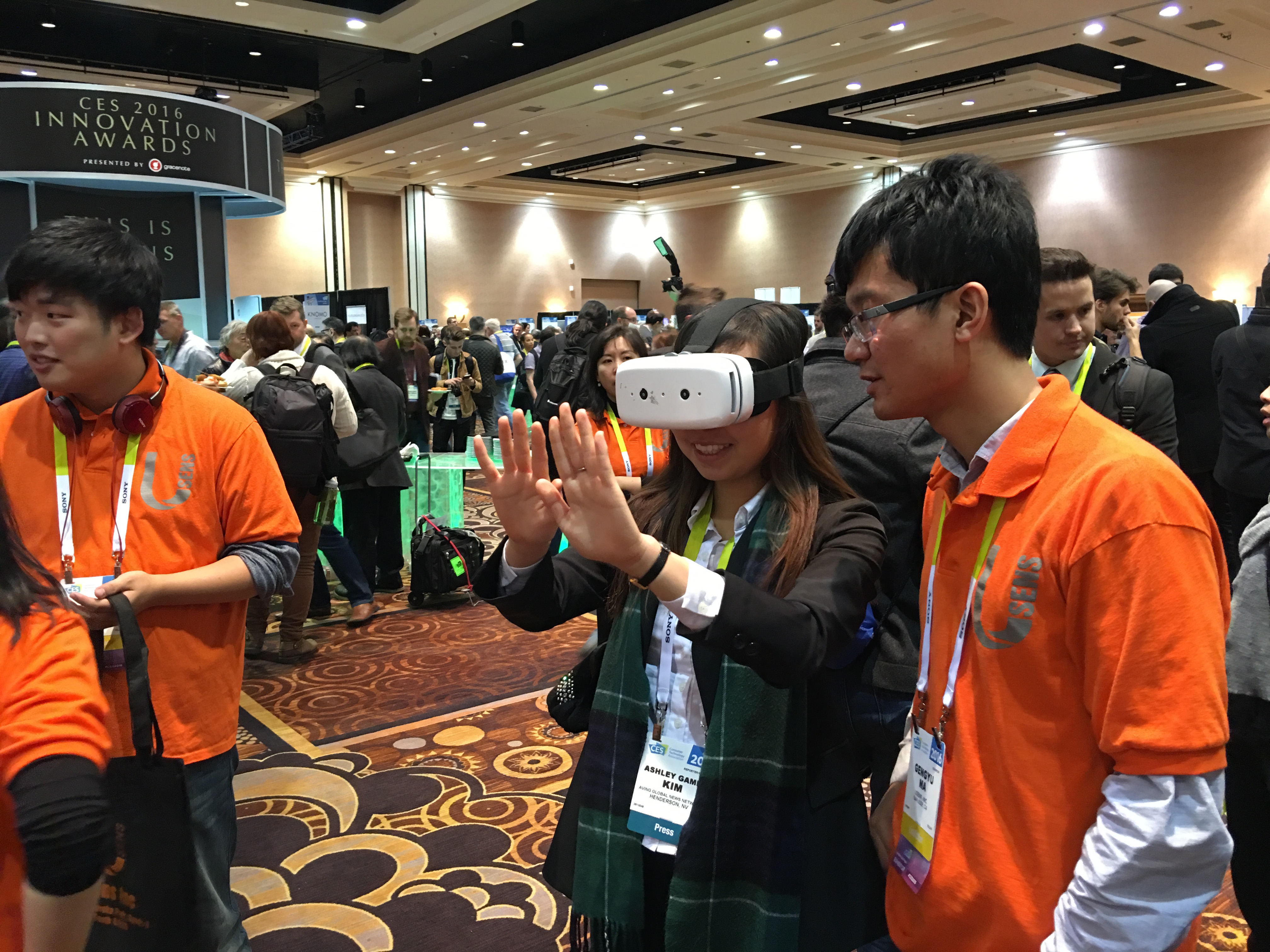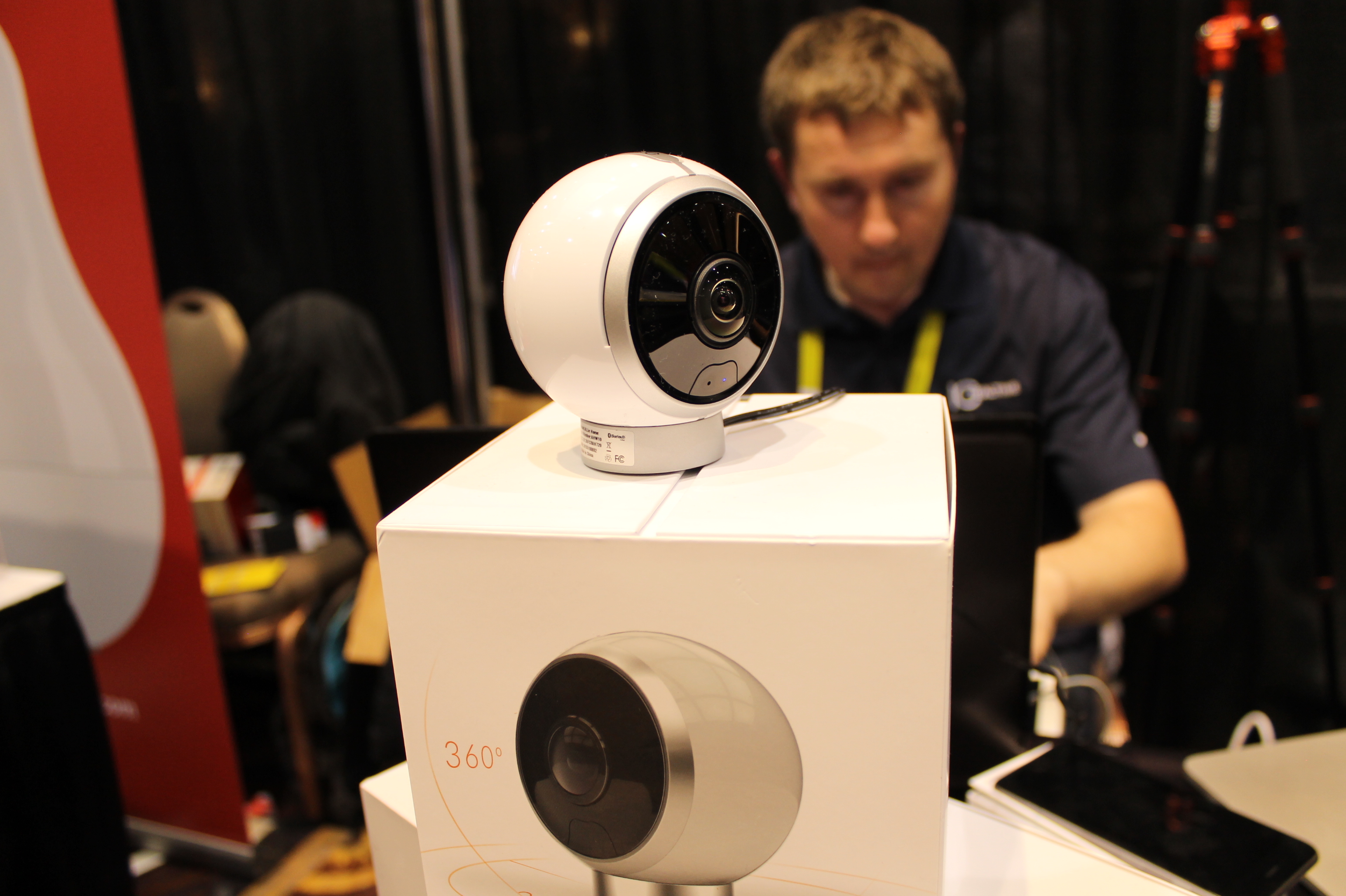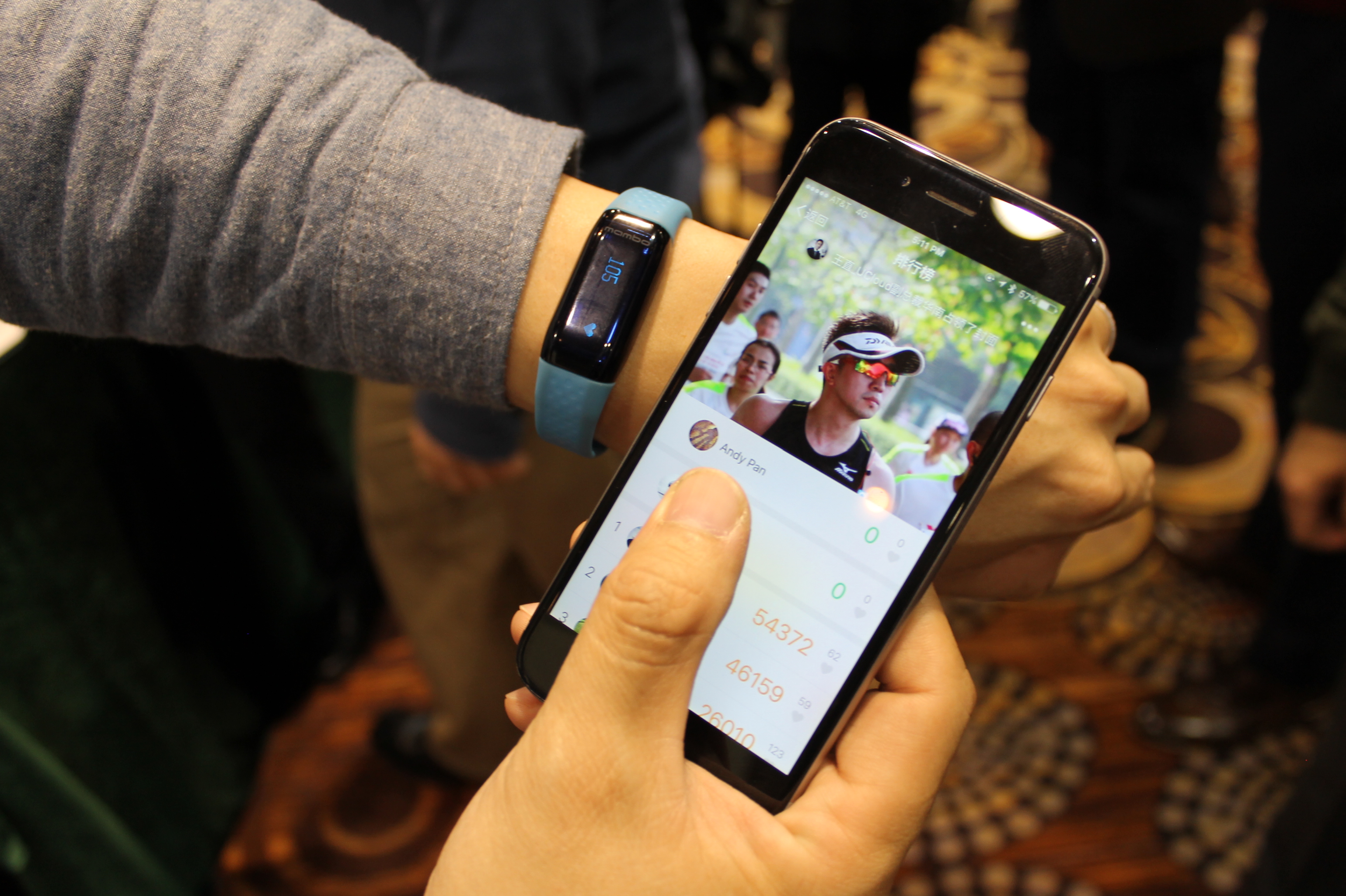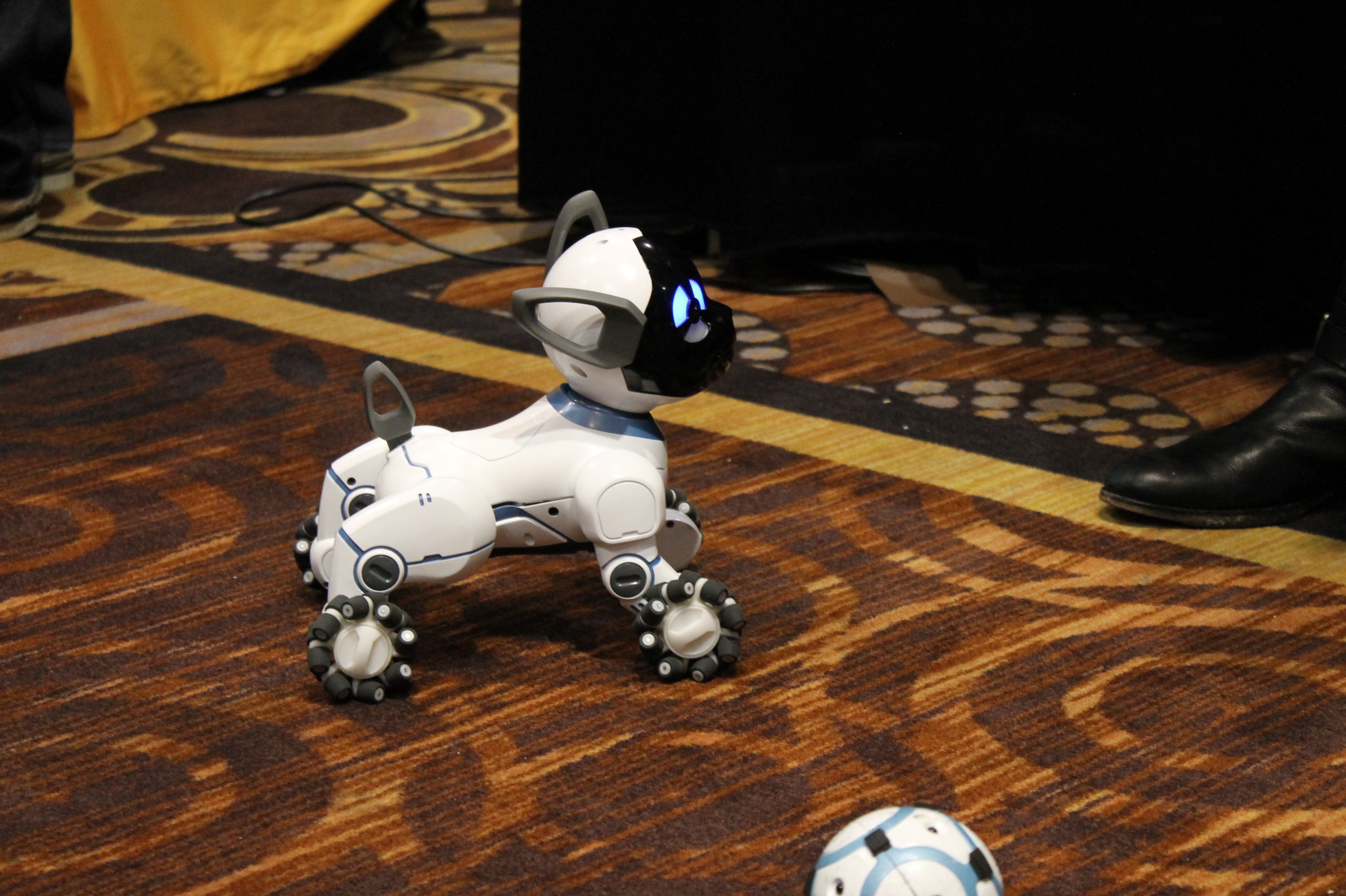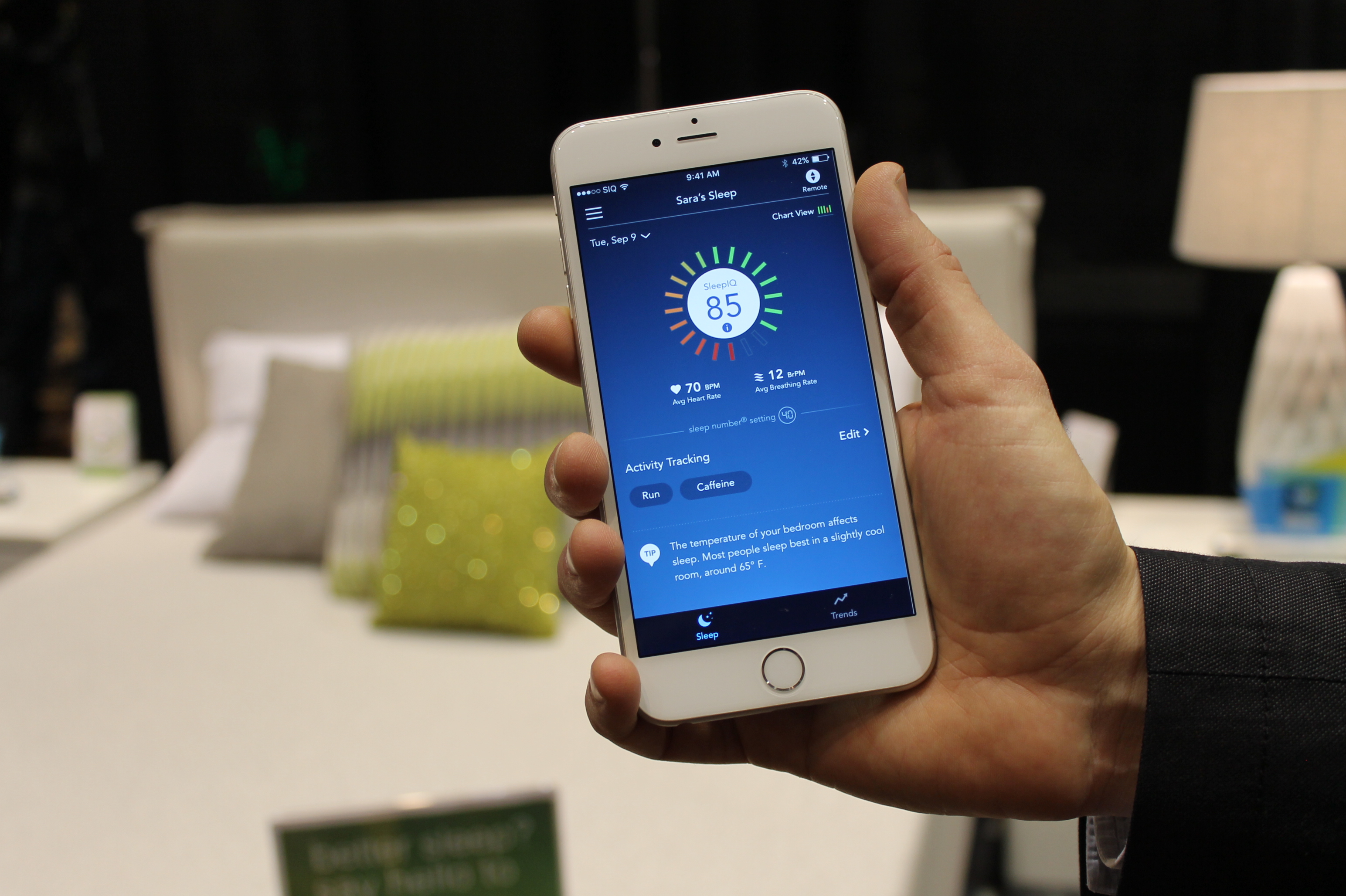
CES hasn’t even begun yet, but we got a sneak peek at some of the technologies that will be on the showroom floor at CTA’s (formally CEA) largest CES in its 49-year history. This year, 150,000 exhibitors will fill up over 2.4 million square feet of space in Las Vegas (the equivalent of 50 football fields), and if the tech at last night’s CES Unveiled event is any indicator, we spotted nine trends to watch in consumer electronics.
Accessories that put your body into VR
Virtual reality is expected to have a banner year this year, with CTA forecasting 1.2 million units to be sold, amassing $540 million in revenue. But as immersive as VR is visually, the current experience for the rest of our body is lacking. This poses a massive opportunity for the VR accessories market and at CES Unveiled we saw a number of companies working on putting the rest of you in a virtual world.
3DRudder is bringing VR to your feet. It’s a discus-shaped device that allows you use your feet to control a VR experience. To move forward, you tilt the device forward; to move to the right, you tilt the device to the right, and so on. The device easily maps onto any experience that currently uses a keyboard, and the best part is that you can walk for miles in VR and never get tired because this controller is meant to be used sitting down.
Of course, life is more than just seeing and walking, so that’s where uSens comes in. uSen’s computer vision algorithm senses hand actions and gestures to put your fingers in the VR mix. In the solar system demo I tried at the event, I was able to select a planet with the tap of my finger to bring up information, bring it closer to me by hovering two fingers on it, and rotate it left and right by waving my hand in that direction.
But if you want to physically feel everything that is on the screen then Immersit’s 4D product is one to keep your eye on. Its plug-and-play accessory turns any couch into a vibrating and moving experience based on the film you are watching or the game you are playing – both in or out of VR.
I checked out a racing car simulation with the Immersit system, which is like a home version of D-BOX, a Canadian company bringing its chairs to movie theatres around the country, and was jerked and bounced around as the car whipped around the track to add to the sense of presence of feeling like I was behind the wheel.
Cameras that let you capture the world in 360-degrees
360-degree content is one of the most accessible VR content formats, especially now that it is supported by the likes of YouTube.
While you previously may have had to purchase a bunch of GoPros and a rig to capture a VR environment, today there are a number of all-in-one 360-degree camera options available including Giroptic and IC Real Tech’s ALLie.
Giroptic’s camera is the first and only 360 camera able to record full spherical photos and videos as JPG or MP4 without any software or post-processing, which means that you can play it back on any screen without any extra work. ALLie encompasses a series of 360-degree cameras, including the GO meant for action shots and HOME meant more for home surveillance. ALLie cameras are the first to instantly share user generated content to Facebook and stream live to both the ALLie and Oculus Rift VR headsets.
Wearables that want to make you well
Wearable tech definitely had a strong showing at this year’s CES Unveiled, with the majority of the devices focused on fitness and health. Pain relief wearables, Quell and ReliefBand, a wrist-worn wearable aimed at treating nausea, were examples of wearables that go beyond quantification to actually affect the way you feel. While startups like VERT, Misfit and Skulpt represented devices that measure its wearers’ bodies to equip them with information to better their performance or overall health.
One interesting company I had the chance to talk to in this space at the show was LifeSense, a Chinese company that makes its own fitness band, smart scale and other smart health products. It caught my eye due to its interesting use of WeChat (China’s What’s App or similar) to message users when they have hit their fitness goals. Its WeChat integration allow users to share their blood pressure with message groups, including their general practitioners. LifeSense’s unique use of messaging apps to distribute wearable and IoT data to users is right on trend with the rise of messaging apps in other areas (e.g. digital concierge services) here in North America, and it would be interesting to see if other players in this space here at home adopt a similar format.
Robot toys you control with your wrist
One of my favourite categories at CES is robots, and although there weren’t many on display, such as the popular Pepper, there were a number of robotic toys to appease the inner child in everyone. And one big trend was the use of wearable tech to control that robotic friend.
WowWee introduced its new canine robot friend CHiP at the show. The AI-enabled robot pup touts an adaptive personality and a SmartBand that allows you to teach it cool tricks. The SmartBand also triggers CHiP’s patented “Loyalty Sense tech” so that he will follow you around or even greet you when you come home when you are wearing the device.
Sphero is also getting into the wearables action with its popular Star Wars-themed BB-8 robot. The company was showing an early prototype of the Force Band which lets users feel as though they are “using The Force” to control the popular droid. The wristband is an alternative way to control BB-8 including gestures and driving the droid in lieu of a smartphone.
Devices that will make your entire house look dumb
Perhaps the biggest trend coming out of CES Unveiled this year was the growing number of connected devices for the home. “Smart” versions of toothbrushes, fans, spoons, fridges and even shower heads garnished the event floor, confirming that at some point in the very near future our entire home will be connected.
One common thread amongst all many of the smart home products was the support of Apple HomeKit including, Hunter Fan‘s HomeKit-enabled ceiling fans. Hunter’s Symphony and Signal are the only ceiling fans that support Apple’s home automation platform which allows Siri to do things like turn it on and off as well as control its built-in lights.
UK-based Smarter wants to make sure you never run out of fridge staples. Its Smarter Mat tracks the weight of things on your refrigerator shelf and then alerts you when you are about to run out. In the future, the company also intends to aggregate information about the items in your pantry and fridge and combine them with recipes to help ensure you make use of products before they expire. Smarter also debuted the Smarter Fridge Cam which lets you peek into your fridge from a smartphone app for a quick check on what you have while you are at the grocery store or planning dinner.
And to make sure that you get a perfect night’s sleep, Sleep Number’s new low-cost smart bed is outfitted with sensors inside the mattress to monitor heart rate, breathing and movement. The company is also working on connecting the bed to other devices in the home, such as smart thermostats, which could potentially convey a scenario where the bed knows you are too hot to then tell a device like Nest to turn the house temperature down.
Smart machines that want to get you drunk
One fitting trend for a tech conference in Vegas was a marked number of products to take your home bar into the future. Meet Somabar your robotic bartender. Somabar is like a Keurig for booze. The appliance holds six “soma pods” which house liquor and mix and, with the touch of a button in the companion app, the machine mixes the perfect drink.
If mixed drinks aren’t your jam and you’d prefer beer instead, PicoBrew may be more to your liking. The home brewing machine, the size of a coffee machine, brews five-liter mini kegs of beer using PicoPacs of pre-packaged ingredients.
In just two hours, you’ll be able to pour yourself a pint of homemade craft beer which you can change up regularly with PicoBrew’s WiFi connectivity which allows users to download new beer recipes.
MobileSyrup may earn a commission from purchases made via our links, which helps fund the journalism we provide free on our website. These links do not influence our editorial content. Support us here.

